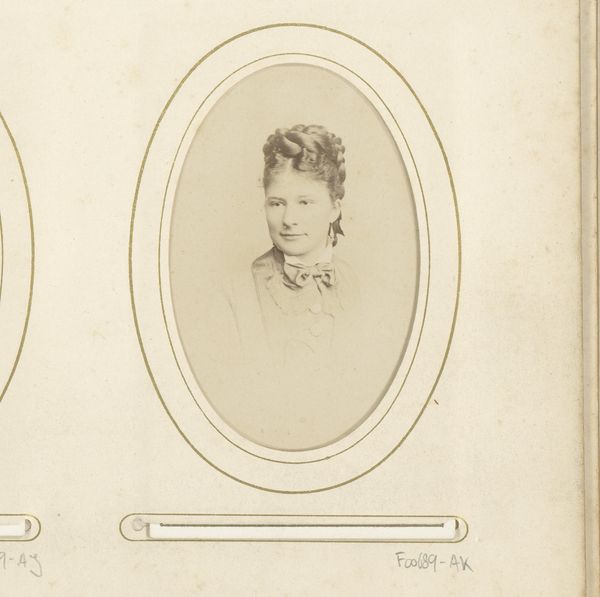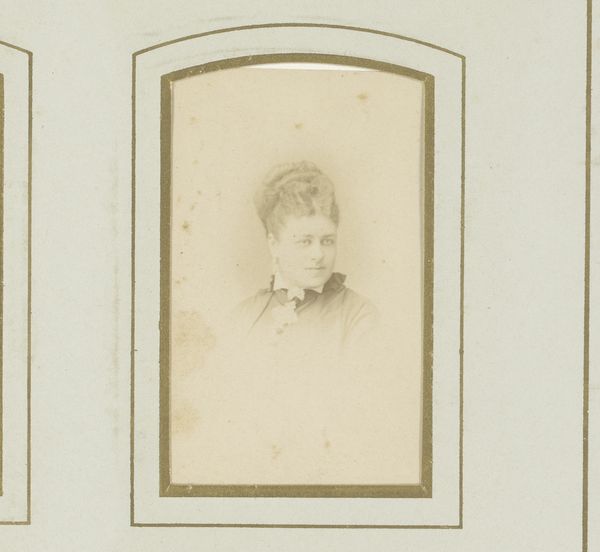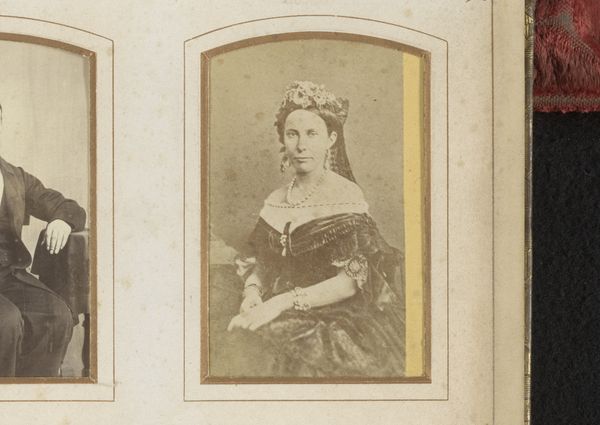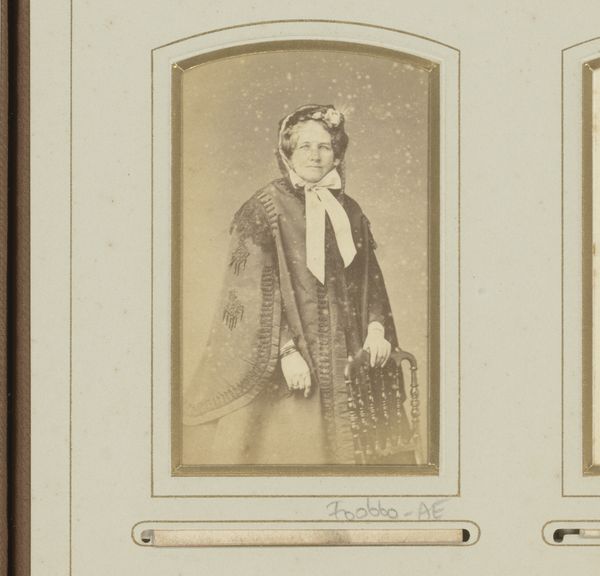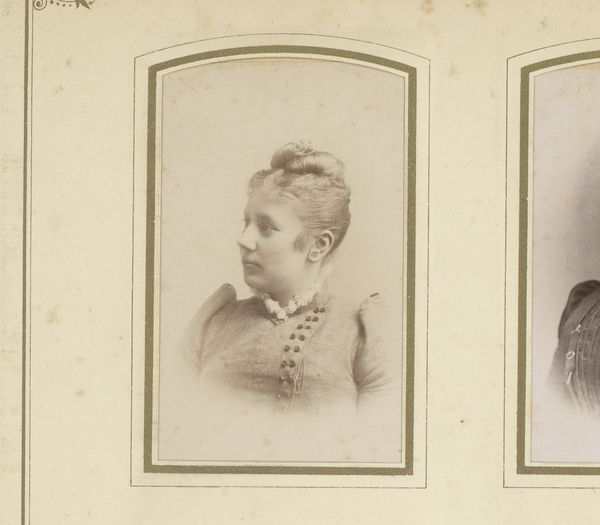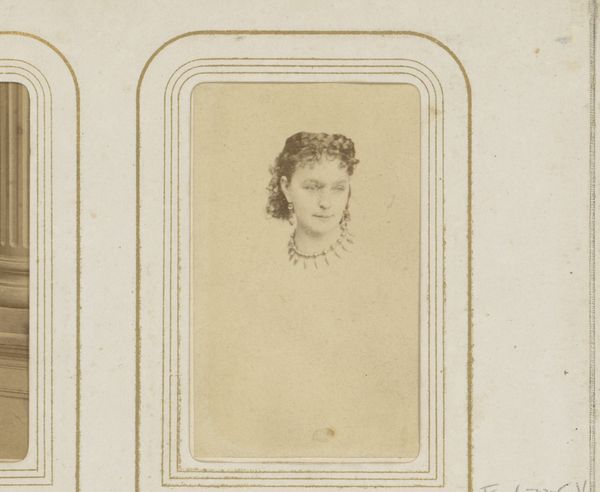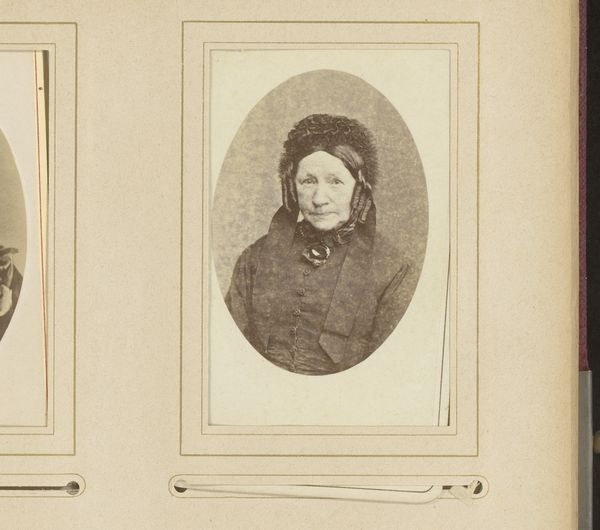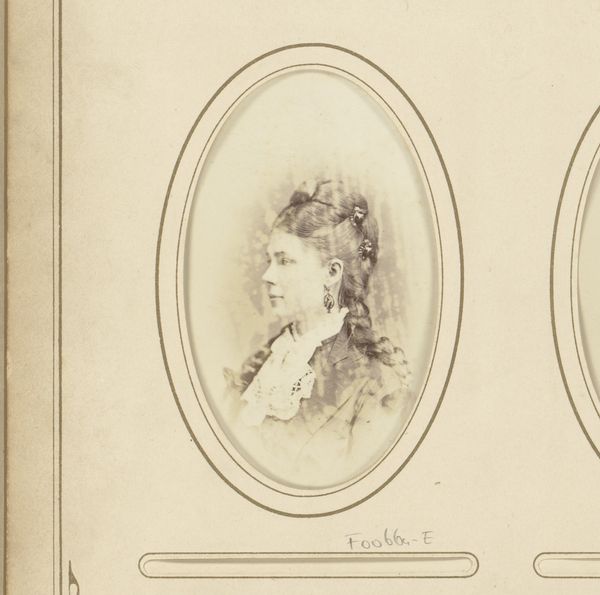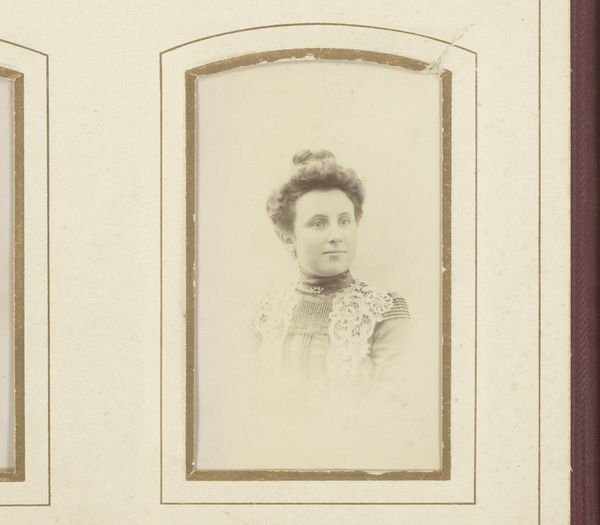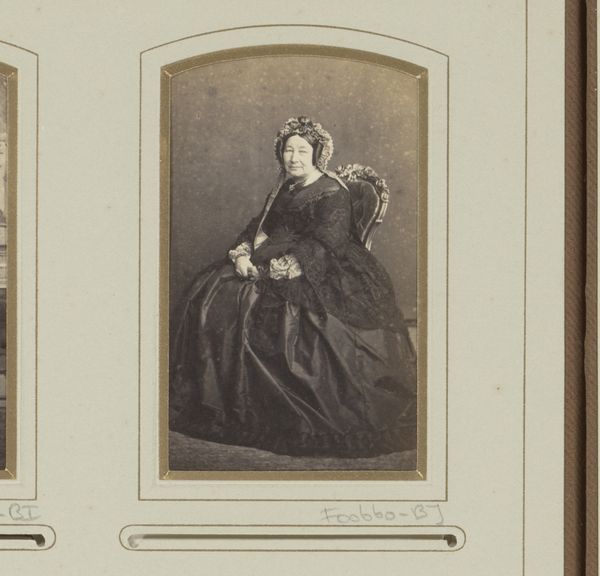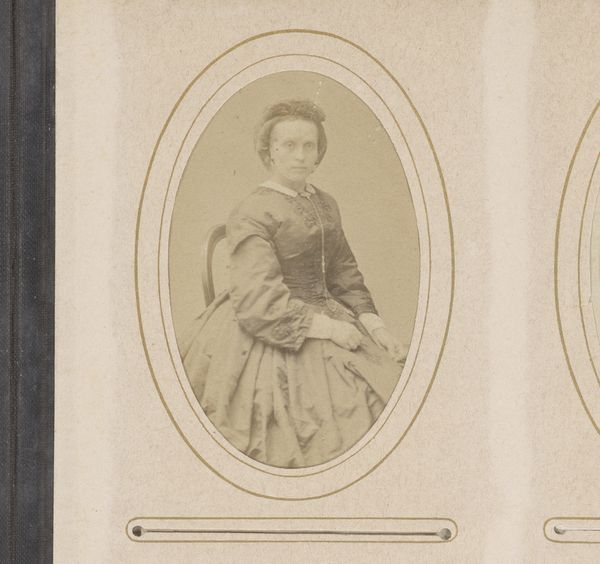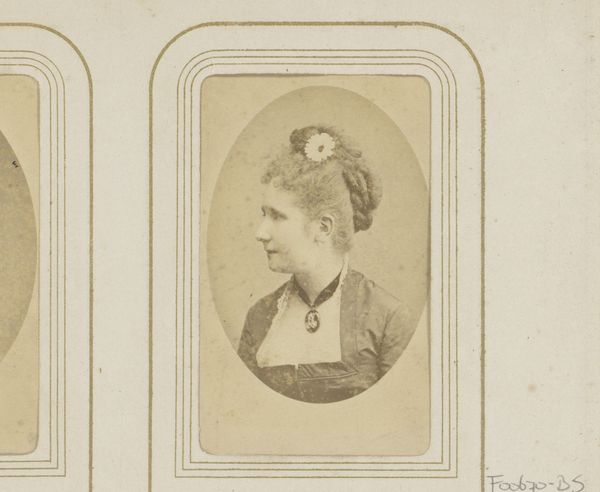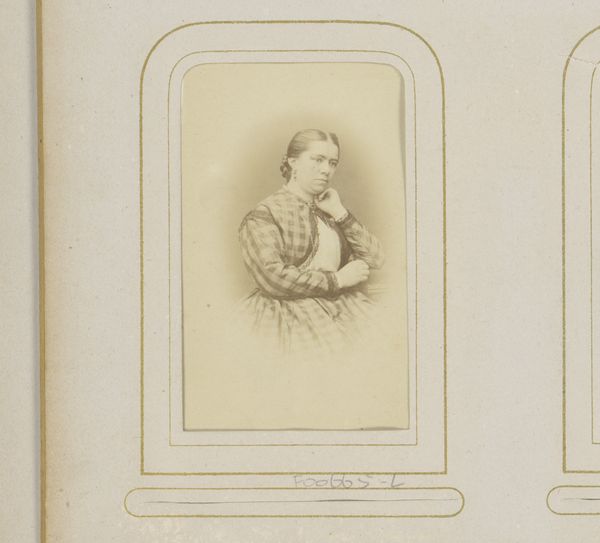
photography, gelatin-silver-print, albumen-print
#
portrait
#
aged paper
#
toned paper
#
muted colour palette
#
photography
#
gelatin-silver-print
#
albumen-print
Dimensions: height 84 mm, width 50 mm
Copyright: Rijks Museum: Open Domain
Curator: This is "Portret van een jonge vrouw," a photograph created between 1880 and 1900 by Photographie Turque, likely an albumen or gelatin-silver print. Editor: My first impression is one of quiet dignity. The oval format and muted tones lend it a classic, almost melancholic air. Curator: Precisely. These studio portraits served as a means of projecting respectability, particularly for women navigating societal constraints. Consider how posture, attire, and even the careful retouching served to construct a particular image of femininity. Editor: I’m struck by the subject's gaze; she’s looking slightly off to the side, which makes me wonder what she’s thinking about. It lends a certain ambiguity to her character that contrasts with the stiff formality. Curator: Absolutely, that gaze, combined with her modest attire and jewelry, hints at her social class and status within the community. We should also consider the agency she had, or did not have, in this representation. To what degree could she subvert the dominant ideals? Editor: The lace collar and the brooch draw my eye. These objects aren’t just decorative; they’re emblems, signifiers that communicated wealth and propriety. I see how they weave together visual elements to reinforce the themes of the image. Curator: I see the lace as almost restrictive, embodying the era’s expectation of feminine domesticity, in stark contrast to contemporary expectations of freedom of expression. Even the 'toned paper' feels complicit in constructing a particular kind of ‘vintage’ authenticity. Editor: Yet, at the same time, that carefully crafted presentation, with all those small, considered symbols, ensured that a part of her – her essence, perhaps – could be preserved across generations. A symbol of resilience, if you will. Curator: Perhaps. Considering this, I am compelled to look for those pockets of subversion and hints of rebellion in otherwise formal imagery, a practice of critique that transcends eras and ideologies. Editor: For me, thinking about those symbols—how the woman and elements around her consciously or unconsciously perpetuated specific meaning—reveals our shared, timeless need to be understood, be remembered, be visible.
Comments
No comments
Be the first to comment and join the conversation on the ultimate creative platform.
